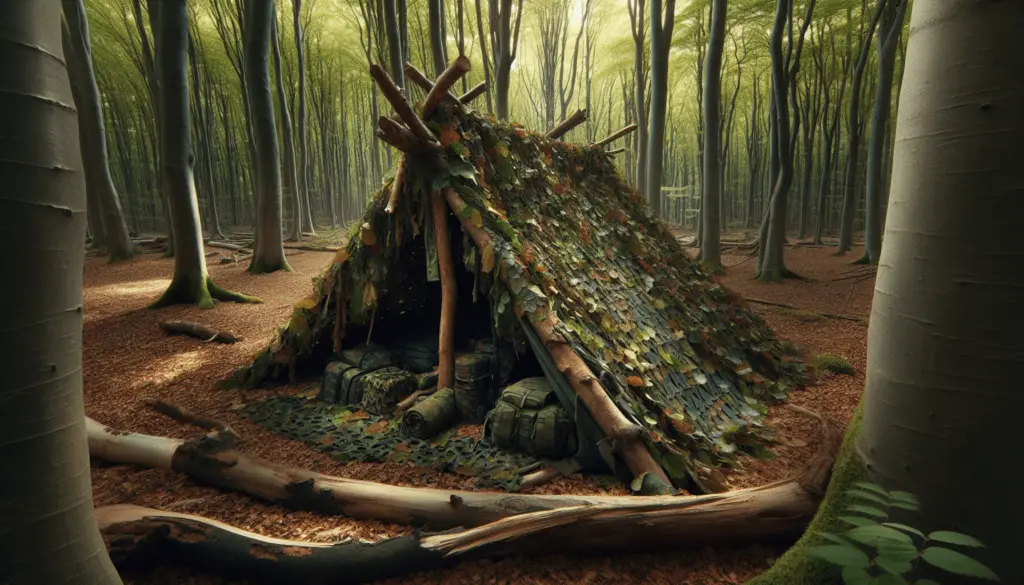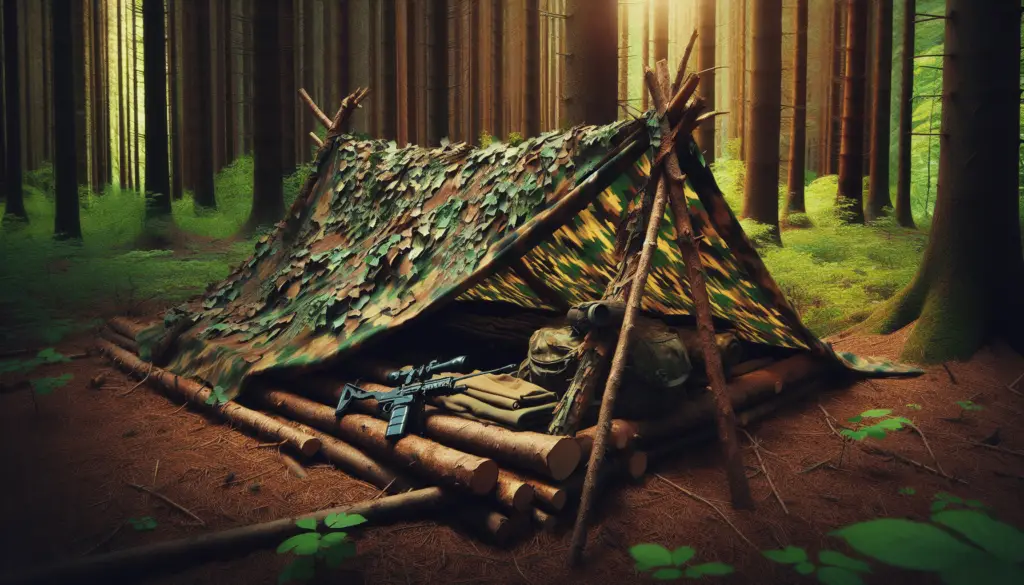Are you looking to enhance your survival skills in the great outdoors? One crucial aspect of surviving in the wild is knowing how to effectively camouflage your shelter and supplies. This skill can make all the difference in remaining hidden from potential dangers and protecting your resources. Let’s explore various techniques for concealing your shelter and supplies to help you thrive in any wilderness setting.

The Importance of Camouflage in the Wilderness
When you find yourself in a survival situation in the wilderness, blending in with your surroundings is crucial for your safety and security. Camouflaging your shelter and supplies can help you remain undetected by wildlife or potential threats, increasing your chances of survival. By mastering the art of camouflage, you can protect yourself and your resources from being easily discovered.
Why Camouflage Matters
Camouflage matters because it can provide you with a tactical advantage in the wild. Being able to blend in with your environment can help you avoid predators, intruders, or other dangers that may pose a threat to your survival. Additionally, camouflaging your shelter and supplies can help you maintain a low profile, ensuring that you are not easily spotted by others who may be looking for resources or shelter.
Choosing the Right Location for Your Shelter
The first step in concealing your shelter is selecting the right location to build it. The location of your shelter can greatly impact how well it blends in with the surrounding environment.
Consider the Natural Surroundings
When choosing a location for your shelter, consider the natural surroundings of the area. Look for areas with dense vegetation, such as bushes, trees, or tall grass, that can help conceal your shelter. Avoid open spaces or areas with little vegetation, as these locations can make your shelter stand out.
Use Natural Features for Concealment
Take advantage of natural features in the environment to help conceal your shelter. Consider building your shelter near rock formations, cliffs, or other natural structures that can provide cover. By integrating your shelter with these features, you can create a more effective camouflage that blends seamlessly with the surroundings.
Blending Your Shelter with the Environment
Once you have selected the right location for your shelter, the next step is to blend it with the surrounding environment. This involves using natural materials and camouflage techniques to make your shelter less noticeable.
Choose the Right Materials
When constructing your shelter, use materials that match the colors and textures of the surrounding environment. Gather leaves, branches, and other vegetation from the area to cover your shelter and create a natural camouflage. Avoid using brightly colored materials or items that stand out, as they can make your shelter more visible.
Use Natural Camouflage Techniques
Utilize natural camouflage techniques to blend your shelter with the environment. Use mud, dirt, or natural pigments to darken the color of your shelter and help it blend in with the surroundings. Create patterns or textures on your shelter that mimic the natural features of the area, such as tree bark or rock formations. These techniques can help disguise your shelter and make it less noticeable to passersby.
Concealing Your Supplies and Equipment
In addition to camouflaging your shelter, it is essential to conceal your supplies and equipment to avoid detection. By hiding your resources effectively, you can protect them from being stolen or discovered by others.
Bury Your Supplies
One effective way to conceal your supplies is to bury them underground. Find a discreet location near your shelter and dig a hole to bury your supplies. Cover the hole with leaves, dirt, or other natural materials to conceal it from view. Be sure to mark the location of your buried supplies so that you can easily locate them when needed.
Use Natural Hiding Spots
Take advantage of natural hiding spots in the environment to conceal your supplies. Look for hollow trees, rock crevices, or underground caves where you can safely store your resources. Be mindful of potential hazards, such as wildlife or flooding, when choosing a hiding spot for your supplies.

Maintaining a Low Profile
To effectively camouflage your shelter and supplies, it is essential to maintain a low profile in the wilderness. By minimizing your impact on the environment and being discreet in your activities, you can avoid drawing attention to yourself and your resources.
Minimize Noise and Movement
When in the wilderness, strive to minimize noise and movement to remain undetected. Avoid loud voices, excessive movement, or any activities that can attract attention. By staying quiet and still, you can reduce your chances of being noticed by wildlife or other individuals in the area.
Conceal Your Tracks
To avoid leaving a trail that can lead others to your location, be mindful of concealing your tracks in the wilderness. Walk on existing paths or surfaces to minimize disturbances to the environment. Use natural materials, such as branches or leaves, to cover your tracks and avoid leaving a clear trail behind.
Conclusion
Mastering the art of camouflage is an essential skill for surviving in the wilderness. By effectively concealing your shelter and supplies, you can increase your chances of remaining hidden and safeguarding your resources. Remember to choose the right location for your shelter, blend it with the environment, and maintain a low profile to enhance your camouflage efforts. With these techniques in mind, you can thrive in any wilderness setting and navigate through challenging survival situations with confidence.
